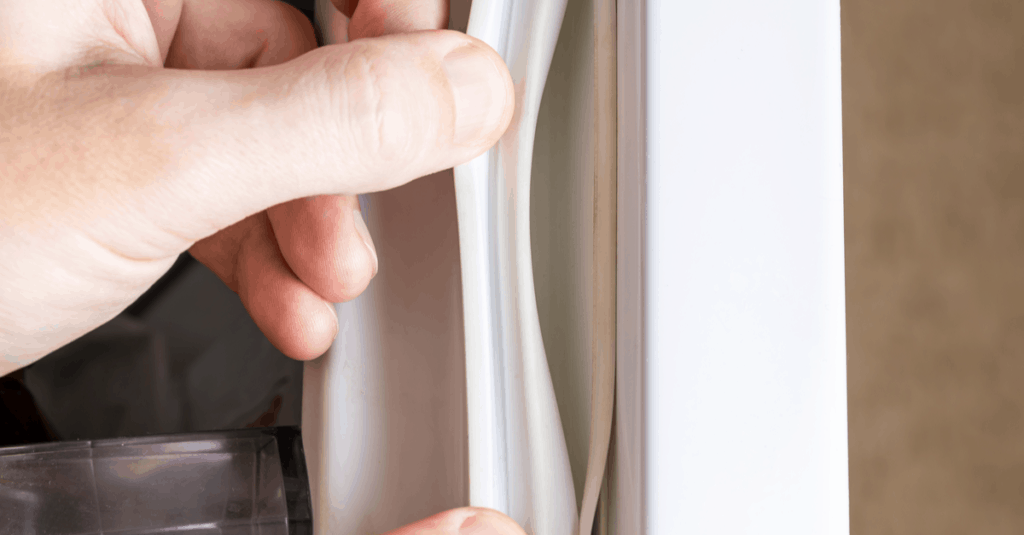How to Remagnetize a Refrigerator/Freezer Door Seal

Remagnetizing the seal around a refrigerator or freezer door is one solution to leaks that diminish those units’ efficiency. Because it’s a stopgap measure that restores some – but not all – of the magnetic forces that seal the door, remagnetization is best reserved for small leaks rather than entire seals. The attempt to remagnetize the door gasket also can inadvertently demagnetize more of the seal, so approach this solution with caution. You may find yourself replacing the entire door gasket if things go wrong.
Most often, when refrigerator or freezer doors don’t seal properly, the issue isn’t magnetic. Before you decide to remagnetize the existing gasket, explore these options:
- Clean the seal and the refrigerator/freezer with warm, soapy water and a soft cloth.
- Warm the gasket so it can mold itself to the surface of the door – especially if the gasket is old and losing its flexibility. A hairdryer provides ample heat for this purpose.
- Apply a thin film of petroleum oil to the gasket to fill minute gaps and thus improve the seal.
One or more of these options often solves the problem. If the issue truly is magnetic, however, it’s possible to remagnetize the flexible magnet in the door gasket. Understand, though, that trying to remagnetize a portion of the seal risks destroying much of the magnet.
The long, flexible magnets inside refrigerator and freezer door seals are relatively weak and can be demagnetized fairly easily. To compensate, the flexible magnets in refrigerators and freezers don’t have the single north-south pole pairs associated with simple magnets. Instead, they have multiple pairs of magnetic poles. Therefore, simply running a neodymium magnet around the seal is a sure way to demagnetize the seal – the exact opposite effect that you want.
A cutaway diagram of a refrigerator/freezer magnet shows magnetic forces running in multiple directions, like a Halbach array. To picture this, imagine five cubes placed side by side. In the first cube, the north pole faces left. It faces down in the second, right in the third, up in the fourth, and left in the fifth. This arrangement creates a strong field on one side of the flexible magnet and all but cancels the magnetic force on its other side.
Refrigerator/freezer door magnets use the same principle to strengthen magnetism and reduce the risk of demagnetism, but typically involve only two or three pairs of magnetic poles. For these shortened Halbach arrays, the north poles points 90 degrees from each other – up, right, and down, for example.
Before attempting to remagnetize the door seal, first check the magnetism pattern of the refrigerator/freezer’s magnetized gasket. Place green viewing film atop the portion of the seal you suspect is demagnetized. The film shows a light green line to indicate where the field direction parallels the film, and turns dark where the magnetic field is perpendicular to the film.
Now that you know the direction of the fields, strong neodymium block magnets can remagnetize the weaker flexible magnet. To remagnetize a portion of the gasket – realizing you may accidentally demagnetize it – align two block-style neodymium magnets side by side so their north and south poles are showing. Have one magnet’s north pole point up and the other down. (This example uses BX048 magnets by K & J Magnetics, Inc., which have their poles on their large rectangular surfaces rather than on the ends.)
Rub these block magnets, as a unit, across the weakly magnetic portion of the door gasket several times. This can return the seal to 0.4 to 0.5 pounds of force – about 65% to 80% of the seal’s original strength.
Remagnetization is a possible solution to strengthen, but not fully repair, the magnetic strength of magnetic door seals. If the issue is significant, however, the optimal solution may be to replace the entire gasket.
